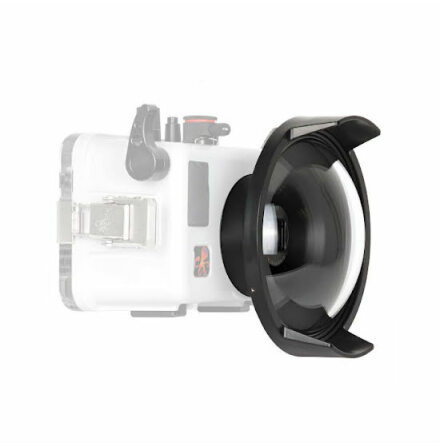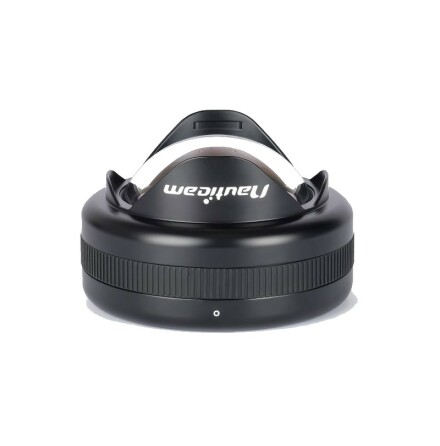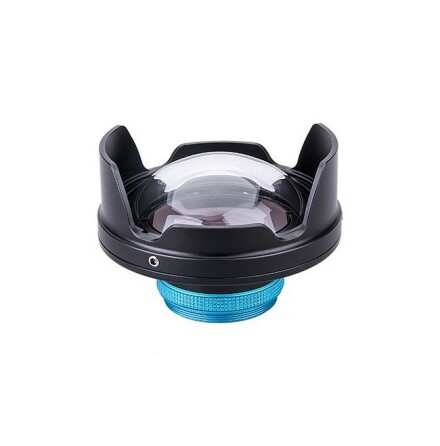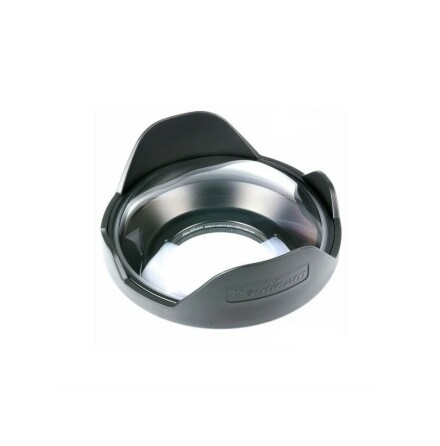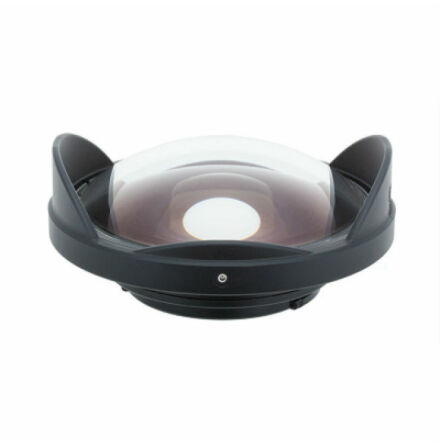Wide angle fundamentals
We often hear "it is so difficult to do wide-angle photography underwater!" But in fact nothing is diffcult when you know how to do it.
What is wide angle photography?
What is considered a wide lens in the "top-side" photography world is quite ofte not enough underwater. Shooting underwater we tend use the widest possible lenses we can afford, because it allows us to get very close to a subject while still include large subjects or scenes in the frame.
Big stuff and big scenes!
Wide-angle photography is about photographing whales, sharks, dolphins, big fish, schools of fish, coral reefs, environments, wrecks, action and much more. This is what we all dream of, it is exciting photography and wide-angle images are interesting for a big audience. Use the right equipment, learn the basics and your are flying!
Difficult or easy?
Wide angle is often considered more difficult compared to macro photography. But in reality nothing is difficult if you have the knowledge. There are many photographers trying hard to do wide angle shots with "non-wide-angle" lenses. This is impossible. You need a real "wide-angle" lens and some basic knowledge. That's all.
10 tips to better wide angle photography
1. A wide-angle lens
Wide-angle photography can be shot with any camera (also compacts and phones). To get a quality wide-angle shot you need to put on a real wide lens solution on your underwater housing. There is no way around this. Contact us for suitable sett-up for your underwater housing.
Wide with a compact camera: A wet wide-angle lens increase the image angle of the built-in lens on your camera. The wet wide lenses fits onto your UW housing and can be mounted with a thread, flip or a twist on a bayonet mount. With the compact camera can switching back and forth from wide-angle to macro while underwater.
Mirrorless: You put a wide lens on your mirrorless camera and combine with a dome port mounted on your underwater housing. The wider the lens is and the closer the lens can focus the sharper the image can be. A great alternative is to use a "normal" zoom lens and mount a "wet wide" lens on your flat port.
2. A straight or a fisheye wide angle lens?
Fisheye or a straight (rectilinear) lens? In the perfect world you would like to have one fisheye and one rectilinear lens and most enthusiasts have both as they are making the image look and feel so different.
A wide rectilinear lens is an almost straight lens that is not bending the corners. These type of wide angle lenses give the image a classic feel. For compact users most wet wide angle lenses are "straight" lenses.
The fisheye lens is very popular among underwater photographers. The fisheye allows for an extreme wide field of view and bend the corner of the image. Most fisheyes have a 180 degree diagonal image angle. Fisheye lenses have a very good closest focus distance and are great for CFWA (Close focus wide angle) with a small dome port.
3. Zoom or fixed focal length lens?
Wide angle: It is popular to use zoom lenses when shooting wide underwater. They give you the zoom advantage underwater. Many brand also make popular fisheye zoom lenses.
Macro: On the macro side it is still fixed focal length lenses that rules. Full frame and cropped sensor users often use from 50 to 105 mm lenses. The Micro 4/3 users use 30mm and 60mm macro lenses.
Important: A suitable lens with the correct port makes the difference. Contact us for support.
4. Dome ports & Wet wide lenses
Shooting with a wide angle lens underwater requires the use of a dome port. The dome port is a spheric port made from acrylic or glass material that your wide lens is looking out at the underwater world through. This is a vital piece of equipment that acts together with your lens.
Mirrorless and DSLR cameras
A general rule of thumb is that the bigger dome the better opticalcharacteristics. Smaller domes have other advantages such as easy to travel with and they allow you to go closer to the subject without shading the strobe light with the port. Please ask us for what your options are here. Underwater photography professionals often use two domes in different sizes.
Compact cameras normally use wet wide lenses instead of domes. But there are also a few domes on the market for compact cameras as well as for GoPro and phones. These mini-domes keep the original lens width underwater.
5. Go close to the subject
To go close to the subject is a fundamental rule in underwater photography. It minimizes the amount of water between your camera and the subject. This is still the number one mistake so remember as a rule of thumb - "the closer, the better".
Regardless of the equipment you use, the principles and techniques for wide angle photography are universal. One of you mantras while out doing underwater photography should be to go close!
6. Enjoying the sun (photographing without strobes)
Using the sun as your light source is a great and easy way to develop as an underwater photographer. You only need the camera, a wide lens and the housing. Easy and simple - So give it a go. When you shoot with ambient light then we suggest you stay in the shallow water with good light conditions.
You learn how to expose the scenes to your liking and composing will be the essential soul of these images. Shoot silhouettes or play with the sun ball. Allow the sunlight to paint the scene of a wrecks, big animals and schools of fish or a split shots linking the topside world with the underwater realm.
7. Strobe light & wide-angle
Adding strobe light to your wide-angle shots enhance the images giving them a fresh and crispy feel. Again it is important to go close to the subject enabling light from your strobes to reach all the way up to the subject. You will enjoy sharp and vivid foregrounds but moderation in strobe output is the key here!
Make sure you start off with a good background exposure and then you can easily add and balance the strobe light for the subject. Find easy and stationary subjects in calm conditions to practise on and get an understanding for how the light fall over the subject. The strobes positions are important.
8. The art of balancing ambient and strobe light
Your strobes are used to paint quality light over your subjects, at the same time as an overall exposure ensures a well lit background. Your goal should be to balance your light in such a way that both the strobe-lit subject and background get a natural feel. One easy method is to make some exposures with the strobes turned off. When you are pleased with the overall exposure, then you turn the strobes on and add a pleasing amount of strobe light on the subject.
9. Arms & buoyancy
You need an arm system to hold the strobe in place. We recommend most users to attach the strobes with a two segment arm on each side and three clamps. Depending on the configuration underwater housings vary in real weight underwater. By adding arm floats, or using thicker buoyancy arms, it is easy to balance the buoyancy of your underwater camera. The camera becomes easier to handle and your photography becomes more creative.
10. Diving skills
To be an good wide angle photographer you need to practise and develop great diving skills. Skilled photographers move around slowly and avoid to stir up the bottom. When the environment allows it, like a sandy bottom, you may carefully lie steady and still. Be a responsible photographer and take care of the delicate environment around you. Amount of lead weights, their position, buoyancy control skills, swimming backward skills, awareness of your surrounding are all important factors.
Wide angle photography products
-
Art. no. IK64013 950 SEK
-
Art. no. 8320214 550 SEK
-
Art. no. WFL073 250 SEK
-
Art. no. 1880914 550 SEK
-
Art. no. 4562121437733 450 SEK
-
Art. no. AOUAL051 850 SEK
 Large stock
Large stock
 Fast shipping
Fast shipping
 Market-leading support
Market-leading support
 +46 (0)40186262
+46 (0)40186262

